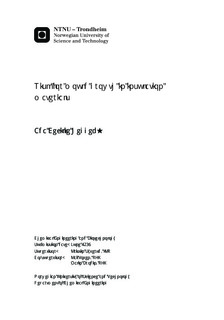Risk for mould growth in insulation materials
Abstract
The aim of this project has been to evaluate what effect different types of fire retardant additives have on mold growth in cellulose insulations. The cellulose insulation materials used have been prepared from two different virgin fiber thermo mechanical pulps and recovered newspaper. Fire retardants additives used has been boric acid, borax pentahydrate, ammonium polyphosphate, magnesium hydroxide and aluminum hydroxide. This have been added to the different cellulose pulps, alone and in combination, to evaluate whether they prevent or provide better conditions for mold growth. A Glava glass wool was also tested to compare the cellulose materials with a commercial product. To insure the results from the Glava testing, untreated glass wool was also tested.
Two different test methods, referred to as Method 1 and Method 2, have been used to determine the extent of mold growth in the prepared samples. Method 1 was developed as a simple pretest to determine what samples was to be tested further in Method 2. Method 2 was based on a previous master thesis with a similar topic to the one in this project, and included incubating the samples with a spore suspension.
As it turns out, Method 1 gave rapid results that were easy to interpret, and provided most of the results used in the conclusion of this report, while Method 1 had a slower development in the mold growth, and further study has been recommended.
From the results, it was found that ammonium polyphosphate provides good conditions for mold growth in cellulose fiber, but that this can be prevented by addition of boric acid, borax pentahydrate, or also magnesium hydroxide. Aluminum hydroxide used alone do not lead to mold growth, but when used in combination with ammonium polyphosphate it increases the growth.
Some mold growth was found on the surface of the tested glass wools, but it was assumed that this was due to moist debris on the surface and that the glass wool only acted as a support matrix.
